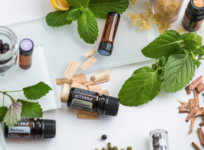“To treat the joints, you must first heal the gut,” urged functional medicine pioneer Susan Blum, MD, MPH, at the recent Clinical and Scientific Insights (CASI) conference sponsored by Designs for Health in San Francisco.
Blum, Founder and director of the Blum Center for Health and author of The Immune System Recovery Program, said that arthritis is one of the most common chronic conditions she treats. Though it shows up in the joints, it is far more than just a joint disease. Her whole body approach to medicine informs her approach to patients with arthritis and other joint conditions.
To treat arthritis effectively, one has to widen the focus beyond the specific sites where symptoms manifest in a patient’s body. In working with her arthritic patients, her search for the underlying causes of inflammation led to the recognition that gut dysbiosis is a recurring theme in many of her patients’ stories.
Regardless of what ails a patient, examining the intestinal flora is a basic strategy for Blum at this point. “Looking at the gut,” she said, “is functional medicine 101.”
Blum is not the only health expert seeking to shed light on the inextricable gut-joint connection. Microbiome researchers have documented significant associations between intestinal microbiome changes and many different types of arthritis.
Most studies examining the role of gut health in joint pain center around inflammatory arthritis conditions like rheumatoid arthritis, psoriatic arthritis, ankylosing spondylitis, and systemic lupus erythematosus (lupus), many of which are autoimmune diseases. Conventional treatment relies largely on pain-relieving nonsteroidal anti-inflammatory drugs (NSAIDs), whose use can not only cause unpleasant side effects, but also alter the composition of the gut microbiome.
Similar treatments–and similar microbiome disruptions–are common in degenerative arthritis or osteoarthritis, the so-called “wear and tear” type of joint pain. While they can provide temporary pain relief, NSAIDS and other pain meds fail to address an essential aspect of joint wellness: intestinal integrity.
True healing from arthritis, Blum said, requires taking time to dig deeper for systemic imbalances that could potentially contribute to patient’s pain symptoms — and for many, the gut is the best place to start.
Heal the Gut, Heal the Joints
A review of the scientific literature on gut health and joint pain reveals strong associations between altered intestinal microbiomes and various arthritis types. A huge percentage of our immune cells live in the gut, where their interactions with certain species of intestinal bacteria activate immune responses in other parts of the body, including the joints.
In one study, researchers detected dysbiosis in the guts of rheumatoid arthritis (RA) patients. When compared with healthy controls, RA patients showed depletions of Haemophilus species, and this correlated negatively with levels of serum autoantibodies in individuals with RA. They also identified that Lactobacillus salivarius was not only over-represented among RA patients, but present in increased amounts in cases of very active RA.
“RA represents a state of chronic inflammation that might be provoked or aggravated by the overgrowth of pathogenic bacteria or a lack of immune-modulating commensal bacteria,” the authors concluded (Zhang, X. et al. Nat Med. 2015; 21(8): 895–905).
When explaining the relationship between gut and joint health to patients, Blum uses the metaphor of the intestinal ecosystem as an “inner garden.” She asks patients to visualize the gut microbiome as a garden of 100 trillion active microorganisms. When carefully tended, those microorganisms work cohesively to support health and wellness throughout the body. But if left untended, communities of harmful bacteria can, like weeds, outgrow and overtake more beneficial ones. To flourish in the long run, the inner garden requires continual weeding and constant maintenance.
Blum’s strategy for strengthening the intestinal microbiota of RA patients includes using herbal antibiotics to treat gut dysbiosis. She then uses probiotics and glutamine supplements to populate the intestine with healthy microflora and to heal the intestinal lining. With these treatments alone, patients often experience significant improvements in pain symptoms and reductions in inflammation as the microbiome shifts towards a less inflammatory pattern.
In addition to supplements, eating healthfully is vital to arthritis treatment. Blum’s patients learn to examine their dietary patterns and remove any pro-inflammatory foods that trigger pain.
Some practitioners find elimination diets to be useful tools for identifying pain-inducing food culprits. However, Blum cautioned that simply removing offending foods from one’s diet to temporarily quell pain is not enough to fully heal chronic pain patients.
“With inflammatory conditions, you have to finish what you start,” she said. Shifting the microbiome towards a permanently improved state of health requires permanent lifestyle change. “Otherwise, we’re guilty of being quick-fix docs like everybody else.”
A Marathon, Not a Sprint
Regardless of its form, “treating arthritis,” Blum suggested, “is like a marathon.” She views the practitioner’s role as that of a coach, supporting and encouraging patients in their ongoing efforts to uncover the sources of their dis-ease and to “cross the finish line to a permanent arthritis cure.”
As with other chronic illnesses, healing from arthritis requires long term effort. For patients with persistent symptoms, Blum believes that “the ‘fixer model’ of acute care,” which overlooks diet, stress, and other root causes of disease, “no longer works.”
Symptom relief is important, but at the same time it is crucial to teach patients the critical skills that will help them make better decisions about to eat and how to manage stress.
When it comes to teaching nutrition, Blum emphasizes the effects of diet on the gut microbiome. What we eat largely determines what microbes — good or bad — wind up in our gut. Patients need to understand that.
Blum recommends that 70 percent of what we eat should come in the form of whole vegetables. Evidence indicates that vegetarianism, veganism, and the Mediterranean diet are among the supports for a healthy gut microbiome. RA patients who follow any of these three diets typically experience symptom improvement even without making any other lifestyle changes, Blum noted.
Her other dietary tips include limiting refined sugars, food dyes and preservatives, avoiding glyphosate and other environmental toxins, using high-quality fat and oils, eating humanely-raised animals, and opting for foods rich in fiber, micronutrients, and phytonutrients.
But simply writing up a diet plan and asking that patients follow it is, for the vast majority of individuals, insufficient. Whenever possible, Blum encourages encourages patients to participate in experiential skill-building activities like cooking classes. She also provides them with healthy recipes. She recommends that practitioners host activities like “lunch and learn” programs or pantry makeovers — or to refer patients out to health coaches, nutritionists, or other specialists who offer these services.
Stress Derails the Gut
After addressing food choices, stress is the second area Blum tackles. How we experience and cope with stress also influences our microbiome, which in turn affects our susceptibility to chronic inflammation.
“Stress derails the gut,” Blum said, causing inflammation to flare up.
She shared the story of a patient successfully managing her joint pain until a major stressor triggered a bout of gut dysbiosis. For this patient, learning to manage stress as a form of preventive care was imperative to her recovery.
Like healthy eating, most of us know that stress reduction is important for health — but it’s not always easy for patients to put that knowledge into practice. Blum counsels practitioners to help patients brainstorm stress-relieving activities and establish realistic plans to put them into place.
She recommends developing daily mind-body practices, emphasizing the need for each person to choose a practice that he or she not only enjoys, but will actually stick with for the long term. Dance, meditation, visualization and guided imagery, shaking, breathing practices, or opting to listen to music instead of turning on the news are all good options. Blum challenged practitioners to develop their own stress reduction plans to experience the benefits firsthand before trying to guide others.
When arthritis patients integrate healthy eating and stress reduction into their lives, they often find that sustainable pain relief becomes far more achievable than with analgesic drugs alone. Underneath it all, their microbiomes will flourish, providing benefits that ripple out not just into the joints, but throughout the entire body.
END







